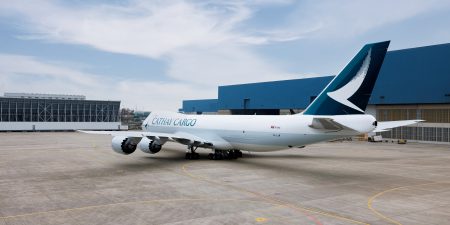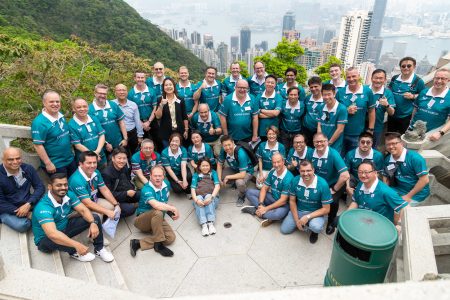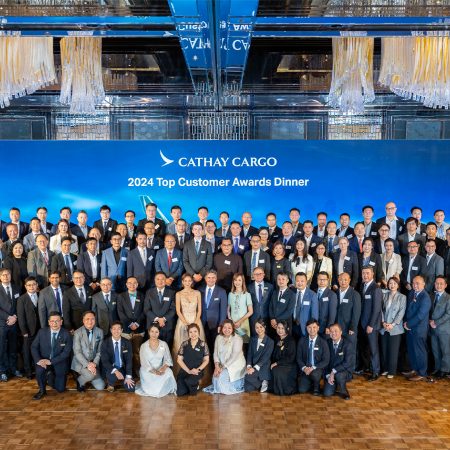Owen highlighted the city’s role as a gateway to the Greater Bay Area, including the new perishables facility at Zhuhai and the upcoming Hong Kong International Airport cargo terminal at Dongguan, set to open in 2026, which will replace the current temporary facility. “It is an extraordinary opportunity that we’ve been presented with for the next 50 years, and better links with our trucking, the intermodal barges and really getting behind the new perishable facilities is what we’re all about,” Owen added.
He then outlined Cathay Cargo’s developments across its special solutions refresh programme – and the growing volume of shipments as a result – as well as its digitalisation efforts, with around three quarters of bookings now coming via Click & Ship, some directly from customers’ systems via API links. Developments that helped Cathay Cargo earn the title of the Cargo Operator of the Year at Air Transport World’s (ATW) 51st annual Airline Industry Achievement Awards.
“It’s great to be recognised in such prestigious awards,” said Owen. “It’s a fantastic achievement and it gives us confidence that our strategy is moving in the right direction.”
The market according to Rotate
The event’s special guest was Ryan Keyrouse, formerly of Seabury and now co-founder and CEO of air cargo consultancy Rotate. His was the unenviable task of making sense of the future air cargo market at that point.
He started by noting that air cargo is, or used to be, cyclical in nature. After an unprecedented 18 months of continuous growth, there was an expectation that it would slow down, as seen in February when growth was recorded at just one per cent. Everything beyond that was challenging to predict as the air cargo market was no longer pegged to traditional economic indicators. “We look at the inventory to sales ratio in the US, we look at the PMI (purchasing manager’s index), and what we find is that for the first time in 15 years, we can’t figure out what’s going to happen next based on these,” he said. “Typically you would see with PMI a two to three-month lead time, but you don’t see that correlation anymore.”
He did though have one certainty, which was that Hong Kong remained the place to be for air cargo given its volumes, demand and capacity growth among other data, later backed up Hong Kong International Airport topping the rankings as busiest air cargo hub. It was a thoughtful and insightful session that had the rapt attention of the room.
On-the-day research
Stellar Wang, Head of Cargo Customer Experience and Service Development, emphasised the importance of customer feedback and insights in shaping Cathay Cargo’s developments. She shared highlights from the latest customer survey, appreciating that twice as many customers around the world have shared their views in our Q1 pulse survey. Then she took advantage of having so many important customers in the same room for a bit of research with attendees posting their responses via their mobiles.
And then the sport…
From there, it was back down the hill on the Peak Tram for the Cathay Cargo green army and on by coach to the new, spectacular Kai Tak Stadium for the evening session of the Hong Kong Rugby Sevens.
This was the first Sevens, and first major sporting event, to be staged at the shiny new venue. The group spent their first evening in the comfort of the Cathay box, enjoying the hospitality and the sport on the pitch before settling into the rhythm of a successful Sevens weekend.







